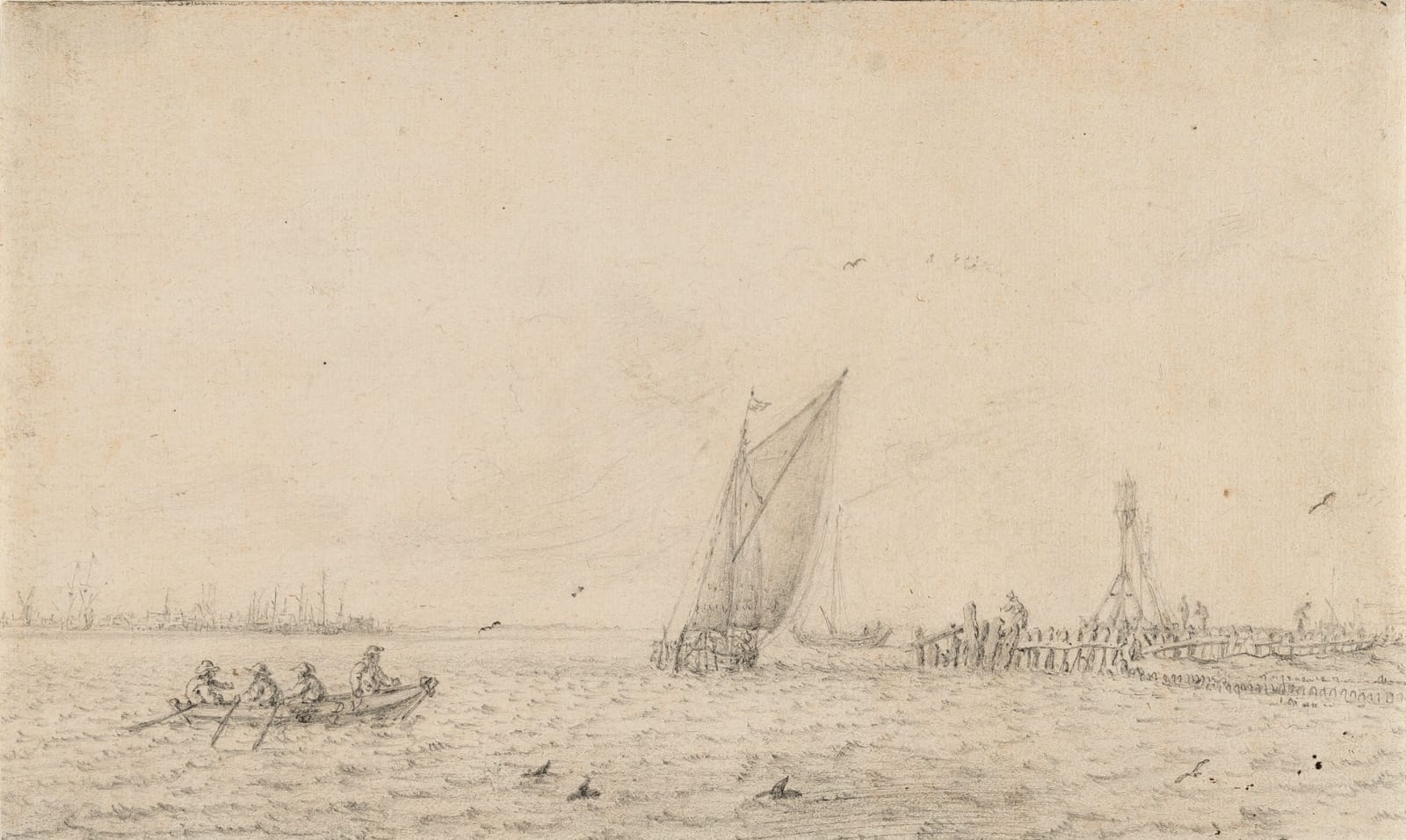Julius Porcellis (Rotterdam ca. 1610 - 1645 Leiden)
Julius Porcellis was born ca. 1610, probably in Rotterdam, although his date and place of birth remain uncertain. He cannot have been born later than 1610 however, as he had reached majority when his father’s will was written in 1631. His father, Jan, was a marine painter, who taught his son well. Although there is hardly any mention of Julius in the archival records, he must have done pretty well for himself as an artist, as it is noted in a document from 1634 that he had not yet collected his (quite substantial) share of 400 guilders of his father’s legacy. In 1644 he is recorded as living in Rotterdam; shortly afterwards however, he must have moved to Leiden, as he was buried there in the Church of St Pancras on the 30th of September 1645.
It is not always easy to distinguish between the works by father and son Porcellis; besides the stylistic similarities which arose from Julius having trained with his father, they also both signed their works with the monogram ‘IP’. The present work has however been firmly attributed to Julius Porcellis on the basis of obvious stylistic similarities with other known works by the artist. It is a beautifully rendered shipping scene, with many exquisite and charming details, such as the pod of dolphins (or porpoises) swimming in the foreground.
Provenance
With Douwes Fine Art, Amsterdam;
Private collection, Germany.
